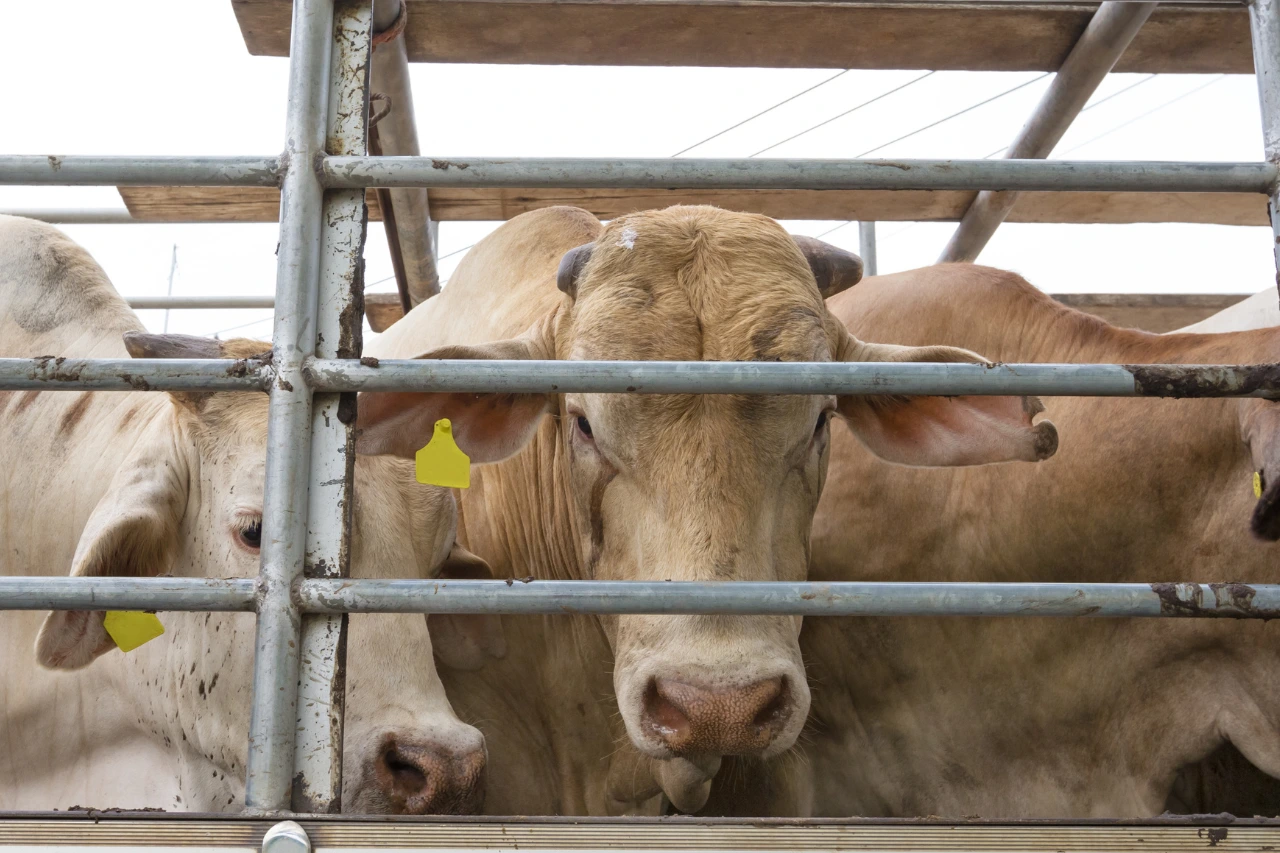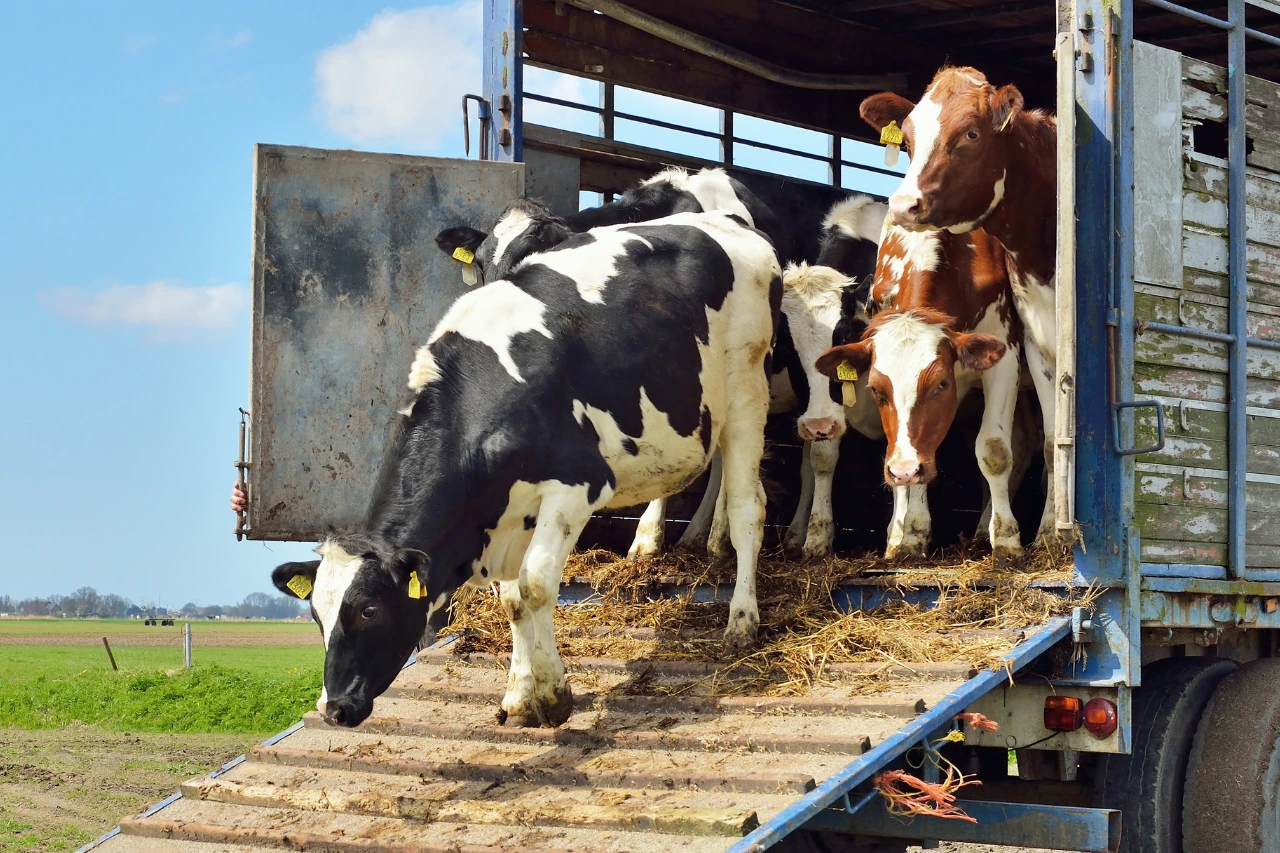Transporting cows, whether over short rural stretches or across international borders, requires precise planning, adherence to animal welfare regulations, and expert execution.
At JCS Livestock, we specialise in safe, humane, and compliant cattle moving. We make the whole process stress-free for the animals and their owners. In this guide, we outline the most critical practices and standards to follow when transporting cows over short and long distances.
Legal Framework for Cattle Transport
Transporting cows isn’t just about loading them into a trailer and hitting the road. In the UK and many other countries, strict regulations govern livestock transport. These include:
- The Welfare of Animals (Transport) Order 2006
- Animal Welfare Act 2006
- EU Council Regulation (EC) No 1/2005 (still applicable for exports/imports)
These laws require that:
- Animals are fit to travel
- Travel time is minimised
- Proper ventilation, bedding, food, and water are provided
- Vehicles meet approval standards
Transporters must also hold valid authorisations, including:
- Type 1 or Type 2 Transporter Authorisations from APHC
- Certificates of Competence
- Vehicle Approval Certificates
Pre-Transport Preparations for Cattle
For transporters, breeders, and cattle importers and exporters, here are some pre-transport preparation tips for cattle:
1. Health Assessment
Before transporting cows, it’s essential that they are fit for travel. Animals should be:
- Free from injury or disease
- Not in the late stages of pregnancy
- Accompanied by necessary health certificates and movement documents
Veterinary checks may be required for international shipments or long-haul domestic transport.
2. Identification and Documentation
Ensure cows have appropriate identification:
- Ear tags
- Passports
- Movement licenses for national or cross-border travel
For export, you must comply with import requirements of the destination country, including quarantine, blood tests, and vaccinations.
JCS Livestock delivers safe, reliable livestock transport services within the UK, backed by industry expertise and a commitment to animal welfare. Get your quote today!
Choosing the Right Transport Vehicle
Cows must be transported in specially designed livestock trailers or lorries that adhere to legal and welfare requirements.
Key Features of Approved Vehicles:
- Non-slip flooring with appropriate bedding (e.g., straw or sawdust)
- Adequate ventilation systems
- Partitions to separate animals and prevent overcrowding
- Temperature control for long-distance or hot-weather trips
- Ramp angles compliant with welfare standards (ideally ≤20 degrees)
Temperature monitoring systems, CCTV, and GPS tracking are also recommended for enhanced animal welfare and traceability.
Loading and Unloading Cows Safely
Cows are naturally cautious animals, so handling must be calm and controlled. Best practices include:
- Using non-slip loading ramps
- Low-stress handling techniques such as using boards or flags instead of electric prods
- Allowing animals to load at their own pace
- Ensuring sufficient lighting and quiet surroundings
Group familiar animals together to reduce anxiety and avoid mixing bulls with cows unless necessary.
On-the-Road Welfare and Monitoring
Here are some essential tips for animal welfare and effective monitoring during transport:
Journey Duration and Rest Stops
Depending on the journey length:
- For trips under 8 hours, regular checks and water access are recommended
- For trips over 8 hours, Type 2 authorisation and vehicle approval are mandatory
Scheduled rest stops every 9–14 hours (as per regulation) should include:
- Access to food and water
- Opportunities to rest if necessary
Journey logs, route planning, and contingency plans in case of delays are essential.
Temperature and Ventilation Management
Cattle are sensitive to extreme temperatures. For long-distance or international transport, it’s crucial to:
- Maintain internal vehicle temperatures between 0°C and 30°C
- Use automatic ventilation systems
- Monitor humidity levels during hot weather

Feeding and Hydration Before and During Transport
Feed cattle at least 12 hours before transport and avoid feeding immediately before departure to prevent motion sickness or bloating.
For long journeys:
- Water must be available at least every 14 hours
- Feeding intervals should not exceed 24 hours
Special care should be taken when transporting calves under 6 months, ensuring they are given electrolytes or milk replacers as needed.
Post-Transport Care and Recovery
Upon arrival:
- Unload cattle promptly and safely
- Allow them time to rest, re-hydrate, and feed
- Monitor animals for signs of stress, injury, or illness
- Isolate any sick or injured cows immediately
Provide clean bedding, ample space, and access to shade or shelter as needed for recovery.
Best Practices for Short-Distance Cow Transport
While often overlooked, short-distance cow transport still demands careful handling. Even a journey under an hour can cause stress if not managed properly. For local transport:
- Use smaller trailers with proper flooring
- Group calm and familiar animals together
- Avoid transporting in extreme heat or cold
- Keep noise levels minimal
Long-Distance and International Cow Transport
Long-haul cattle transport (e.g., over 8 hours or across borders) introduces additional challenges. For compliance and welfare:
- Collaborate with licensed livestock transporter
- Secure pre-travel inspections, international health certificates, and import permits
- Confirm quarantine protocols at the destination
- Use livestock-specific freight services for air and sea transport
International air freight often includes:
- Custom-designed livestock crates
- Veterinary supervision during flight
- In-flight climate control systems
Related topic: UK Live Animal Export Ban
Common Mistakes to Avoid During Cattle Transport
Avoiding errors is essential to protect animal welfare and avoid legal repercussions. Common mistakes include:
- Overcrowding
- Inadequate documentation
- Using unapproved vehicles
- Neglecting hydration
- Poor route planning
- Mishandling during loading/unloading
Partner With JCS Livestock for Stress-Free Cattle Transport
At JCS Livestock, we bring over 20 years of expertise in cattle transport, offering bespoke transport solutions for every distance. We ensure:
- Welfare-first practices
- Regulatory compliance
- Veterinary oversight
- Timely and safe delivery
From the farm gate to the final destination, we manage every detail with precision, care, and compassion.
Cow Transport – FAQs
- Is a license required to transport cows in the UK?
Yes. To transport cows in the UK for commercial purposes, you need a valid Animal Transporter Authorisation and, in many cases, a Certificate of Competence. - What type of vehicle is suitable for cow transport?
Cows must be transported in approved livestock vehicles that ensure safety, comfort, proper ventilation, and non-slip flooring. For long journeys, vehicles must be inspected and approved under DEFRA guidelines. - Do I need a Certificate of Competence to move cows?
Yes, for journeys over 65 km (approximately 40 miles), a Certificate of Competence is required to ensure that handlers know how to properly manage and care for cattle during transit. - Are there any rules about journey length?
Yes. The maximum journey time for cattle without special arrangements is typically 8 hours. Longer journeys require Type 2 Transporter Authorisation, rest periods, and specific vehicle features like temperature monitoring and water supply. - What documents are required when transporting cows?
You must carry the following documents: Animal Transporter Authorisation, Certificate of Competence, Animal Transport Certificate (ATC) for journeys over 65 km, Cattle Passport for each cow, Movement Licence or eAML2 record (England/Wales). - Can sick or injured cows be transported?
Only animals fit for transport may be moved. Injured, weak, or pregnant cows (close to calving) must not be transported unless under strict veterinary guidance. - What are the welfare guidelines for cattle transport?
Welfare guidelines include: Adequate space for movement, Proper ventilation and temperature control, Regular checks during the journey, Clean and dry bedding,Access to food and water for long trips. - Who regulates cow transport in the UK?
Transport is regulated by DEFRA and local Animal Health and Welfare teams. Non-compliance may result in penalties or suspension of transport rights. - Can cows be transported internationally from the UK?
Cows can be transported internationally from the UK for breeding or non-slaughter purposes, as live exports for slaughter or fattening are banned (Animal Welfare (Livestock Exports) Act 2024). Compliance with UK and destination country regulations, including Export Health Certificates, TRACES documentation, and quarantine, is mandatory. - How can I find a professional cow transport service in the UK?
Look for licensed and experienced livestock transporters like JCS Livestock, who meet all DEFRA and welfare standards, offer nationwide coverage, and safe transportation.
Final Words
Transporting cows over any distance, short or long, is a task that demands care, planning, and compliance with strict animal welfare standards. From pre-transport preparation to post-journey recovery, every step matters for the safety, comfort, and legal compliance of livestock movement.
At JCS Livestock, we bring decades of hands-on experience, certified practices, and a welfare-first approach to every journey. Whether you're relocating cows or sheep within the UK, our team is equipped to handle all logistical, regulatory, and welfare aspects of cattle transport.
Don’t leave your livestock transport to chance. Partner with JCS Livestock for reliable, expert, and stress-free cattle transport solutions tailored to your specific needs.
Get a cattle transport quote and move your animals with confidence. Get in touch if you have any questions!
📞 +44(0)1753 682 244
📧 Email: enq@jcslivestock.com
Recommended topics:
